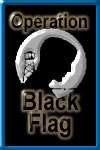




Name: Robert Page Rosenbach
Capt Rosenbach has officially been declared dead, as his wife waived her right to continue the fight to bring him home. However, his remains have yet to be recovered. If he is dead, I wish to see his remains recovered and returned for proper burial in the country he fought for. With the slightest possibility that he is still alive, I will continue the effort to find him. For more information on Maj Rosenbach, please read his biography
Rank/Branch: O3/US Air Force Reserves
Unit: 31st Tactical Fighter Wing
Date of Birth: 23 August 1941
Home City of Record: Kirkwood MO
Date of Loss: 05 March 1970
Country of Loss: South Vietnam/Over Water
Loss Coordinates: 131100N 1092400E (CQ266578)
Status (in 1973): Missing in Action
Category: 3
Aircraft/Vehicle/Ground: F100D
 SSGT RANDOLPH BOTHWELL SUBER
SSGT RANDOLPH BOTHWELL SUBER

Name: Randolph Bothwell Suber
SYNOPSIS: SSgt. Ronald E. Ray was a platoon leader and Sgt.
Randolph B.
Suber a
riflemen and a team member of a six-man reconnaissance team on a
mission
in
Laos. Both were assigned to Command and Control North, MACV-SOG
(Military
Assistance Command, Vietnam Studies and Observation Group).
MACV-SOG was
a
joint service high command unconventional warfare task force
engaged in
highly
classified operations throughout Southeast Asia. The 5th Special
Forces
channeled personnel into MACV-SOG (although it was not a Special
Forces
group)
through Special Operations Augmentation (SOA), which provided
their
"cover'
while under secret orders to MACV-SOG. The teams performed deep
penetration
missions of strategic reconnaissance and interdiction which were
called,
depending on the time frame, "Shining Brass" or "Prairie Fire"
missions.
On November 13, 1969, Ray and Suber and their team were on a
reconnaissance
mission about 15 miles inside Laos in Saravane Province when
they were
attacked
by a numerically superior enemy force at 1600 hours.
In the intial fire, 3 indigenous were killed, and Ray sustained
chest
and arm
wounds and fell to the ground, groaned and became silent. One
indigenous
team
member, Nguyen Van Bon, checked Ray and shook him, but obtained
no
response.
Ray's weapon was smashed.
Bon stated that he last saw Suber trying to gain contact on his
URC-10
emergency radio, then pick up his weapon and aim at four
approaching
hostile
soldiers, but that the rifle did not fire becasue it became
jammed, and
that
Suber was hit immediately afterwards and fell to the ground. Bon
called
to him,
but he did not move or answer. Their position was overrun by
enemy
forces and
Bon evaded capture and was ultimately rescued.
Even though the report given by the indigenous may lead one to
assume
Ray and
Suber are dead, the Army classified them as Missing In Action.
There are
a
number of reasons to support this determination, including
mistrust of
indigenous reports. If Ray and Suber had merely been
incapacitated, many
Army
personnel would say that the indigenous would look to his own
safety
first,
disregarding the fate of the wounded Americans. As a general
trend, the
Army
did not accept indigenous reports that were in conflict with or
unsubstantiated
by other information. Another factor, of course, could be that
the Army
knew
that they were not dead. It is not uncommon for details of loss
incidents in
Laos to be obscure. It is even more common for details of
MACV-SOG
operations
to be sketchy.
For every insertion like Ray and Suber's that were detected and
stopped,
dozens
of other commando teams safely slipped past NVA lines to strike
a wide
range of
targets and collect vital information. The number of MACV-SOG
missions
conducted with Special Forces reconnaissance teams into Laos and
Cambodia was
452 in 1969. It was the most sustained American campaign of
raiding,
sabotage
and intelligence-gathering waged on foreign soil in U.S.
military
history.
MACV-SOG's teams earned a global reputation as one of the most
combat
effective
deep-penetration forces ever raised.
The missions Ray and Suber and others were assigned were
exceedingly
dangerous
and of strategic importance. The men who were put into such
situations
knew the
chances of their recovery if captured was slim to none. They
quite
naturally
assumed that their freedom would come by the end of the war. For
591
Americans,
freedom did come at the end of the war. For another 2500,
however,
freedom has
never come. Ray was on his third tour of duty in Vietnam.
Since the war ended, nearly 10,000 reports relating to missing
Americans
in
Southeast Asia have been received by the U.S., convincing many
authorities that
hundreds remain alive in captivity. Ray and Suber could be among
them.
If so,
what must they think of us?
I cannot emphasize enough how important it is to keep pushing
this
issue inside the Beltway...
The need to get specific answers is more important now than ever
before.
If still alive, some MIAs are now in their 70s...They don't have
much
time left. We have to demand the answers from the bureaucrats
and keep
standing on their necks (figuratively speaking) until they get
the
message that THEY work for US and that we are serious about
getting
these long overdue responses. Diplomatic considerations aside...
We can no longer allow questionable protocols established by
pseudo-aristocratic armchair strategists, to determine or
influence the
fate of the men who were in the trenches while the diplomats
were
sharing sherry and canapes and talking about "Their Plans" for
the
future of SE Asia.
If you'd like to see what some others are doing in addition to
writing
their congressmen, senators and the Whitehouse, check out this list of POW/MIA sites
Rank/Branch: E5/US Army Special Forces
Unit: CCN - MACV-SOG, 5th Special Forces Group
Date of Birth: 22 May 1947
Home City of Record: Ballwin MO
Date of Loss: 13 November 1969
Country of Loss: Laos
Loss Coordinates: 155813N 1070227E (YC184666)
Status (in 1973): Missing In Action
Category: 2
Aircraft/Vehicle/Ground: Ground
Other Personnel in Incident: Ronald E. Ray (missing)



[Prev] [Skip Next] [Random] [Next] [Next 5] [Members] [Join]
|
 REMEMBER |